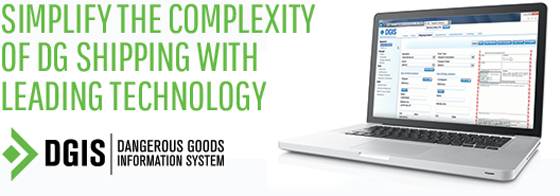

Week of August 19, 2019
Linking technology news with Dangerous Goods compliance
Technology continues to impact supply chain planning and execution. But achieving meaningful organizational change requires companies to share data and align processes with stakeholders, customers and suppliers.
To help companies keep a pulse on technology trends impacting business and the movement of dangerous goods throughout the supply chain, Labelmaster has launched “Supply Chain Moves,” a weekly report linking the latest technology news to dangerous goods compliance.
Let’s examine the recent supply chain technology and industry news.
TECHNOLOGY
- The Impact of New Technology on Supply Chain Planning: Supply chain planning is undergoing a major transformation as companies adopt digital strategies to replace manual processes.
- ERP Update: The Leaders of the Pack: As logistics and the end-to-end supply chain gain prominence in the C-suite, ERP vendors continue to enhance their supply chain management offerings to serve both new and existing customers.
- Five Factors Shaping Data Science: As data science evolves, key challenges are driving organizations to seek innovative solutions to compete in the new AI-driven economy.
- Warehouse Voice Technology Speaks for Itself: Voice solutions are as diverse as the algorithms and analytics driving them – exposing new opportunities.
- How IoT is Transforming Supply Chain Management: As shipping times shrink, the supply chain has become more important than ever.
3PL TECH
- 3PL Perspectives 2019: What does the road ahead look like for shippers and logistics service providers? Inbound Logistics’ 14th annual 3PL market research report explores potential speed bumps and market movers.
- State of US Logistics 2019: In the face of skyrocketing supply chain costs, smart shippers and their logistics providers have come to realize that close collaboration is no longer simply a worthy ideal but a vital necessity.
- 2019 Top 100 3PLs: Here is a list of the Top 100 3PLs that are providing innovative and reliable supply chain solutions.
Technology & Dangerous Goods Compliance
Technology continues to have a major impact on supply chain planning as companies transition away from manual processes in favor of a more digital approach. In a recent interview with SupplyChainBrain, Shaun Phillips, global product manager for QAD DynaSys, states, “We’re seeing the advent of transformational types of technologies, such as machine learning as part of artificial intelligence. We’re seeing advanced analytics, as well as the coming of the Internet of Things and the connectivity of external devices to the supply chain.”
He highlights how companies have traditionally had an inward way of looking at our supply chain but, today, most of the data required to make smart business decisions comes from outside an organization. “We can connect to it through the Internet of Things and get real-time updates. With the advent of new technology, we can collaborate digitally with stakeholders, customers, suppliers, even consumers,” Phillips says.
He notes how organizations, especially in industries such as automotive, are moving to common platforms to increase visibility and better identify risk, but that’s only part of the solutions. He adds, “Having access to upstream and downstream data is one thing. You need to be able to coordinate upstream and downstream processes, and to do that in a coordinated manner, people need to work to the beat of the same drum. They need some level of workflow that’s common among the different stakeholders.”
Many of the items shipped (including automotive components) are regulated hazardous materials. As a result, compliance plays a critical role in effective supply chain planning and execution. Dangerous goods shippers need to adopt digital strategies that allow them access critical compliance data and then share it with key stakeholders, customers and suppliers. Likewise, they need to receive that information from their supply chain partners in order to ensure they have the necessary internal processes in order to ship goods in a safe, compliant and efficient manner.
Are you able to coordinate upstream and downstream processes across your supply chain?
To learn how to make dangerous goods compliance a key part of your organization, visit https://www.labelmaster.com/.

Labelmaster’s Dangerous Goods Information System (DGIS) is the leading SaaS solution to help companies more efficiently and accurately manage their Dangerous Goods shipments. DGIS validates your Dangerous Goods shipment data against the latest regulations, ensuring a more efficient supply chain and reducing friction found in Dangerous Goods shipments. DGIS is a certified partner/validation solution with ERP, transportation and warehouse management systems.

